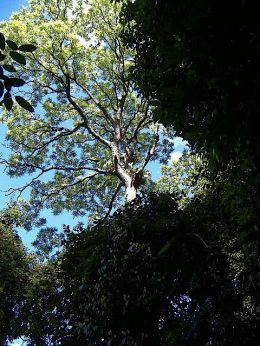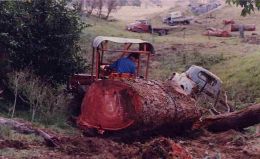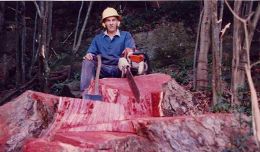History of Cedar
As soon as the early settlers started to cut trees in NSW they quickly discovered the value of Cedar as a premium quality cabinet timber, and the race for it resembled a ’Gold Rush.’ The Cedar ‘getters’ became unconscious pioneers and were responsible for opening up new areas as the search moved ever northward. In 1795 it became Australia’s first export as it was not economically sensible to send ships back on a six month voyage with an empty hold. Governor King, (governor 1800-1806), warned, in 1802, that the supply of Cedar might be finite and should be subject to regulation. He was right. By 1900 the supply of cedar was close to exhausted. What remained was not enough to satisfy any large commercial demand.
Australian Red Cedar was given the botanical name Toona Australis. It is one of the few eastern deciduous native trees and grew only as far south as Ulladulla, so cedar furniture made in Tasmania required the timber be sent from NSW. It was apparent that the best timber was to be found in the most Southerly latitudes, where it could grow slowly in cool ravines, producing short, stubby trees of great girth. Accordingly, the early cabinetmakers called this wood ‘Mahogany Cedar’ because it showed all the figure and other characteristics which had made Mahogany from South America, Cuba and the West Indies the most fashionable timber of the day in England. The use of highly figured, dense timber is an essential component of the early furniture history of this country because the decoration is in the wood itself. As the supply seemed endless, only the best trees were felled for cabinet making leaving the rest for secondary applications like joinery. In the grandest Colonial houses however, even the joinery was fashioned from the best wood and was so splendid that it was rarely painted as in England, where lesser timbers were used.
As the timber cutters moved progressively northward, it became obvious that the tall, hotter climate, rainforest trees produced timber of less figure, less density and of lighter colour. Today, the Golden Age (1788-1850) of cabinetmaking in N.S.W. and Tasmania is considered to be bound up with the high quality timber surrounding Sydney and the Hunter region. It is the furniture from this period that is the most highly prized today by collectors and museum curators. By the time steam machinery came into use about 1850, the best was in the past.
Peter Gibbs, a native of the Hunter Valley himself, has developed a supply chain enabling him to source some of the remaining ‘Mahogany Cedar’ in the Hunter Valley still in private hands, so that this essential ingredient of early furniture can live again. These trees, often so old that they had already died, are so massive in girth that he has been able to cut boards of up to three feet in width and so continue the early tradition of making large tables and case furniture from single boards, without joins. Most people have never seen cabinet timber boards of this width.
Recently, Australian Red Cedar was renamed Toona Ciliata, as DNA tests have proved that the species grows from the south coast of NSW up through Queensland and New Guinea to Southeast Asia, all the way to India. The quality of the wood however, and its suitability for fine furniture deteriorates as we move towards the equator.


